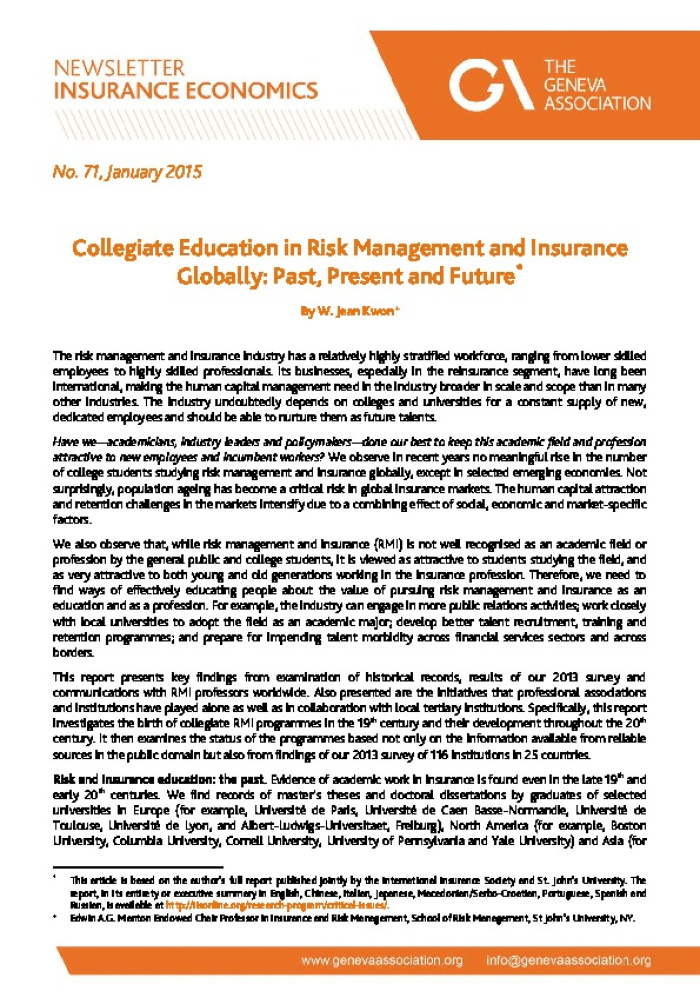Collegiate Education in Risk Management and Insurance Globally: Past, Present and Future
Insurance Economics No. 71

No. 71 , January 2015 Collegiate Education in Risk Management and Insurance Globally: Past, Present and Future * By W. Jean Kwon+ The risk management and insurance industry has a relatively highly stratified workforce, ranging from lower skilled employees to highly skilled professionals. Its businesses, especially in the reinsurance segment, have long been international, making the human capital management need in the industry broa der in scale and scope than in many other industries. The industry undoubtedly depends on colleges and universities for a constant supply of new, dedicated employees and should be able to nurture them as future talents. Have we? academicians, industry leaders and policymakers ?done our best to keep this academic field and profession attractive to new employees and incumbent workers? We observe in recent years no meaningful rise in the number of college students studying risk management and insurance globally, except in selected emerging economies. Not surprisingly, population ag eing has become a critical risk in global insurance markets. The human capital attraction and retention challenges in the markets intensify due to a combining effect of social, economic and market -specific factors. We also observe that , while risk management and insurance (RMI) is not well recogni sed as an academic field or profession by the general public and college students, it is viewed as attractive to students studying the field, and as very attractive to both young and old generations working in the insurance profession. Therefore, we need to find ways of effectively educating people about the value of pursuing risk management and insurance as an education and as a profession. For example, the industry can engage in more public relations activities; work closely with local universities to adopt the field as an academic major; develop better talent recruitment, training and retention programmes; and prepare for impending talent morbi dity across financial services sectors and across borders. This report presents key findings from examination of historical records, results of our 2013 survey and communications with RMI professors worldwide. Also presented are the initiatives that professional associations and institutions have played alone as well as in collaboration with local tertiary institutions. Specifically, this report investigates the birth of collegiate RMI programmes in the 19 th century and their development throughout the 20th century. It then examines the status of the programme s based not only on the information available from reliable sources in the public domain but also from findings of our 2013 survey of 116 institutions in 25 countries. Risk and insurance education: the past. Evidence of academic work in insurance is found even in the late 19th and early 20th centuries. We find records of master?s theses and doctoral dissertations by graduates of selected universities in Europe (for example, Universit? de Paris, Universit? de Caen Basse -Normandie, Universit? de Toulouse, Universi t? de Lyon, and Albert -Ludwigs- Universitaet , Freiburg), North America (for example, Boston University, Columbia University, Cornell University, University of Pennsylvania and Yale University) and Asia (for * This article is based on the author?s full report published jointly by the International Insurance Society and St. John?s Uni versity. The report, in its entirety or executive summary in English, Chinese, Italian, Japanese, Macedonian/Serbo-Croatian, Portuguese, Spanish and Russian, is available at http://iisonline.org/research- program/critical-issues/. + Edwin A.G. Manton Endowed Chair Professor in Insurance and Risk Management, School of Risk Management, St John?s University, NY.